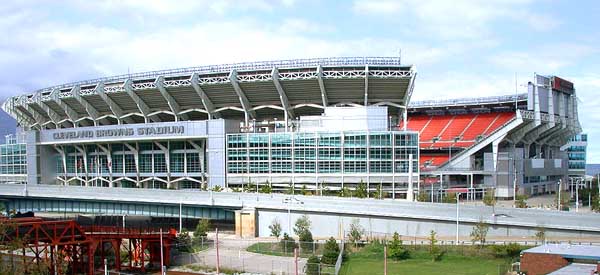
There is little doubt that Cleveland Browns Stadium, completed in 1999, is more aesthetically pleasing than its predecessor. It’s much easier on the eyes from the outside, with the orange seats adding a distinctive splash of color in famously grey Cleveland. The design also makes for more convenient viewing on the inside, with virtually unobstructed sightlines. It goes without saying that the Stadium is light years ahead of the old Municipal in terms of navigability and convenience.
None of those plusses alter the notion that if Municipal Stadium was a mistake on the lake, Cleveland Browns Stadium is pure boondoggle. Nearly 75% of the construction cost was borne by Cuyahoga County taxpayers. (The NFL kicked in most of the rest). The Browns lease the facility for a mere $250,000 annually. Therefore, the shrinking populace of Cuyahoga County – many of them cash strapped rust-belters – is paying for a facility that relatively few use (and at additional expense), for the benefit of the few: the players, managers, and corporate owners.
It can be, and has been, argued that the stadium boosts the local economy, creating jobs and bringing people downtown whenever there’s an event. The jobs created are mostly part-time, with low wages and few if any benefits. Lacking a dome (which was rejected due to the cost), and even more open to the elements than the old Stadium, the new facility was used a scant 10 times by the Browns this past season. (Non-Browns events have occurred, but are exceedingly rare.) So, the notion of a publicly funded stadium as a booster for economic development is dubious at best. In an era when tea-baggers complain of socialism, I have yet to hear a peep from them about this flagrant corporate socialism.
NOTE: My above complaints have nothing to do with the fact that the Browns suck.
*Cleveland’s location on the shores of Lake Erie may one day be the factor that brings the city back to prominence. The Great Lakes hold 21% of the world’s surface fresh water. Any climate scientist will tell you than in the not too distant future, water will be a more valuable commodity than oil.

No comments:
Post a Comment